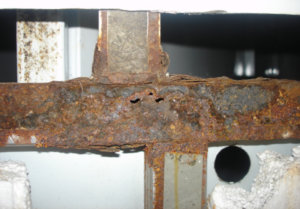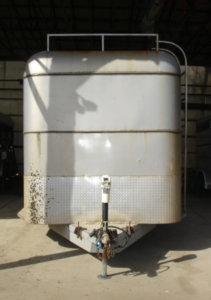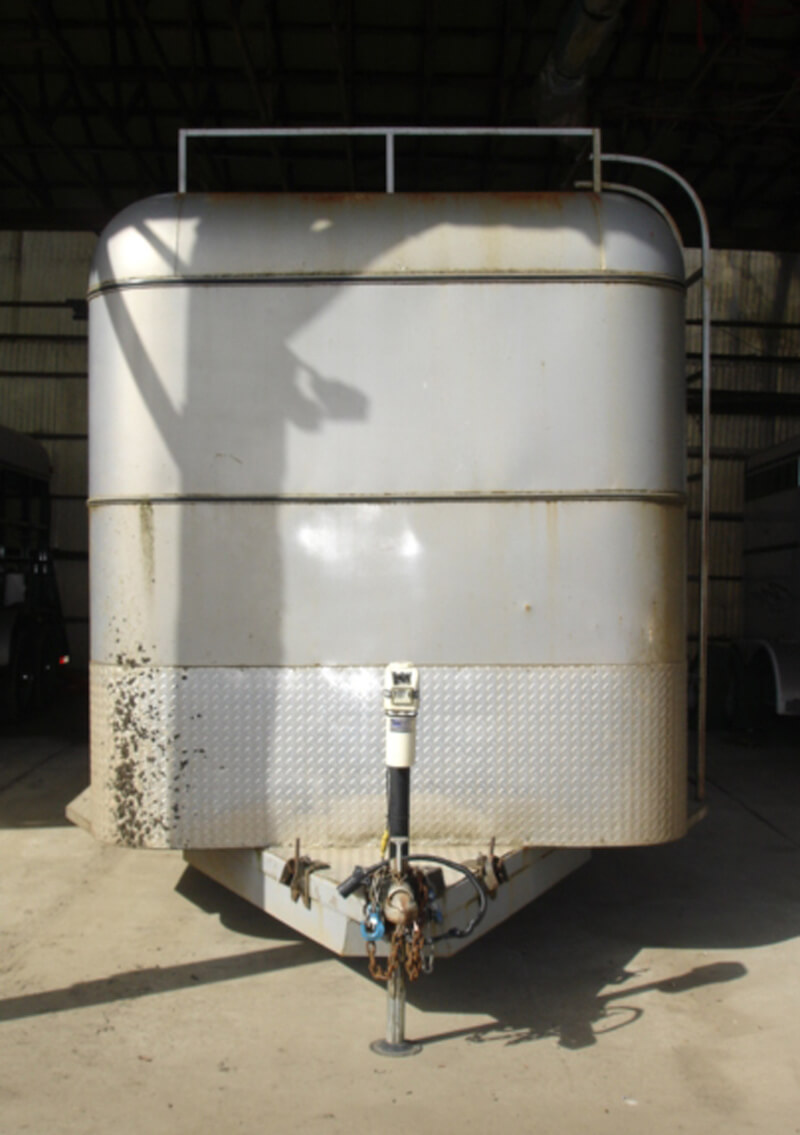Trailer Anatomy 101: Structure and Framework
by Leigh Goodison Grieve
All trailers begin with a chassis frame. The tubing framework for the trailer is then built around the chassis. Before either the steel, aluminum or composite skin goes on, the trailer frame looks much like a Conestoga wagon without the canvas cover. Then the steel or aluminum is welded or pop riveted to the framework and painted. 
Never is the framework primed beforehand, and though you’ll hear terms like ‘electroplated’ or ‘galvanized’ steel, all steel will eventually rust. It is common now to have steel frames with aluminum skins, but if there is no protective barrier between the two dissimilar metals, electrolysis will occur and aluminum will deteriorate and oxidize.
Here in the Pacific Northwest, the single biggest problem is with water getting into the framework and being unable to escape. When temperatures drop, the water in the framework freezes and expands, bursting the metal. With steel trailers, water and freeze damage equals rust. But with both aluminum trailers and steel, the frame will be structurally weakened once it splits. It is also much more expensive to repair, and may require removing the split metal and installation of a new support beam. Many double walled trailers have Styrofoam insulation between the walls to act as an insulator or to reduce sound. However, when water is allowed to ingress the Styrofoam only helps to trap moisture inside.
As with any framework, the more supporting cross members underneath the floors and ‘beams’ on the upper framework, the stronger the trailer will be. Cross members on a typical floor should be a minimum of 16” apart, but 18” is acceptable. In the case of a rotten or weak floorboard, the horse is less likely to fall through if the cross members are closer together. If a horse kicks a wall with fewer vertical tubing supports, the wall surface will dent and bow more than one with more structure.
Trailer tongues should always be of a length, weight carrying capacity and strength to safely balance and haul the trailer, livestock and anything else you may pack into it. There are a number of home built trailers on the market that often don’t meet even the NATM (National Association of Trailer Manufacturers) standards, which, if the manufacturer is a member, has a sticker that states ‘trailer must meet minimum safety standards.’ What is considered ‘minimum safety’ is frightening enough, but when ‘backyard trailer builders’ don’t even need to follow those standards, it’s dangerous for everyone on the road.
The length of a trailer tongue will determine how quickly it pivots when turning. The tongue length should be appropriate to the length of the trailer. The tongue of this 4-horse trailer shown was grossly inadequate for the trailer’s length and weight. This is not usually a problem with commercial manufacturer’s models, but as in the case with home-builts again, improper engineering and a shorter tongue will bow the tongue and distort the main framework and sheet metal. A longer tongue gives a wider turning radius and is less likely to jack knife the trailer. They are also better if you have a camper on the back of your truck that extends over the rear bumper. We’ve all seen trailers with dented noses from turning too sharply with too short a tongue.
This is not usually a problem with commercial manufacturer’s models, but as in the case with home-builts again, improper engineering and a shorter tongue will bow the tongue and distort the main framework and sheet metal. A longer tongue gives a wider turning radius and is less likely to jack knife the trailer. They are also better if you have a camper on the back of your truck that extends over the rear bumper. We’ve all seen trailers with dented noses from turning too sharply with too short a tongue.
Horse owners who travel with their horses will often buy factory installed hay racks or have them installed after market. Hay racks cause more problems than they solve. Unfortunately, most trailers are not manufactured with the structural strength on the roof to carry the weight of hundreds of pounds of hay. If not properly installed by anchoring the rack into the framework, they will damage the interior and exterior of the trailer. Any holes drilled need to be properly sealed to ensure the roof won’t leak. This is also true for ladders accessing the roof. Take into consideration your additional weight when climbing on the roof. If you do have a hay rack, at least displace the weight with a platform so you don’t dent the roof of the trailer. Standing on the roof will also break the seams, and cause the roof to leak and rust.
“The Secret Lives of Horse Trailers” will be released on DVD this summer. For more information visit www.handyrider.com or email horsetrailerrestoration@yahoo.com
Published November 2011 Issue

The Colorado Horse Source is an independently owned and operated print and online magazine for horse owners and enthusiasts of all breeds and disciplines in Colorado and surrounding area. Our contemporary editorial columns are predominantly written by experts in the region, covering the care, training, keeping and enjoyment of horses, with an eye to the specific concerns in our region.

